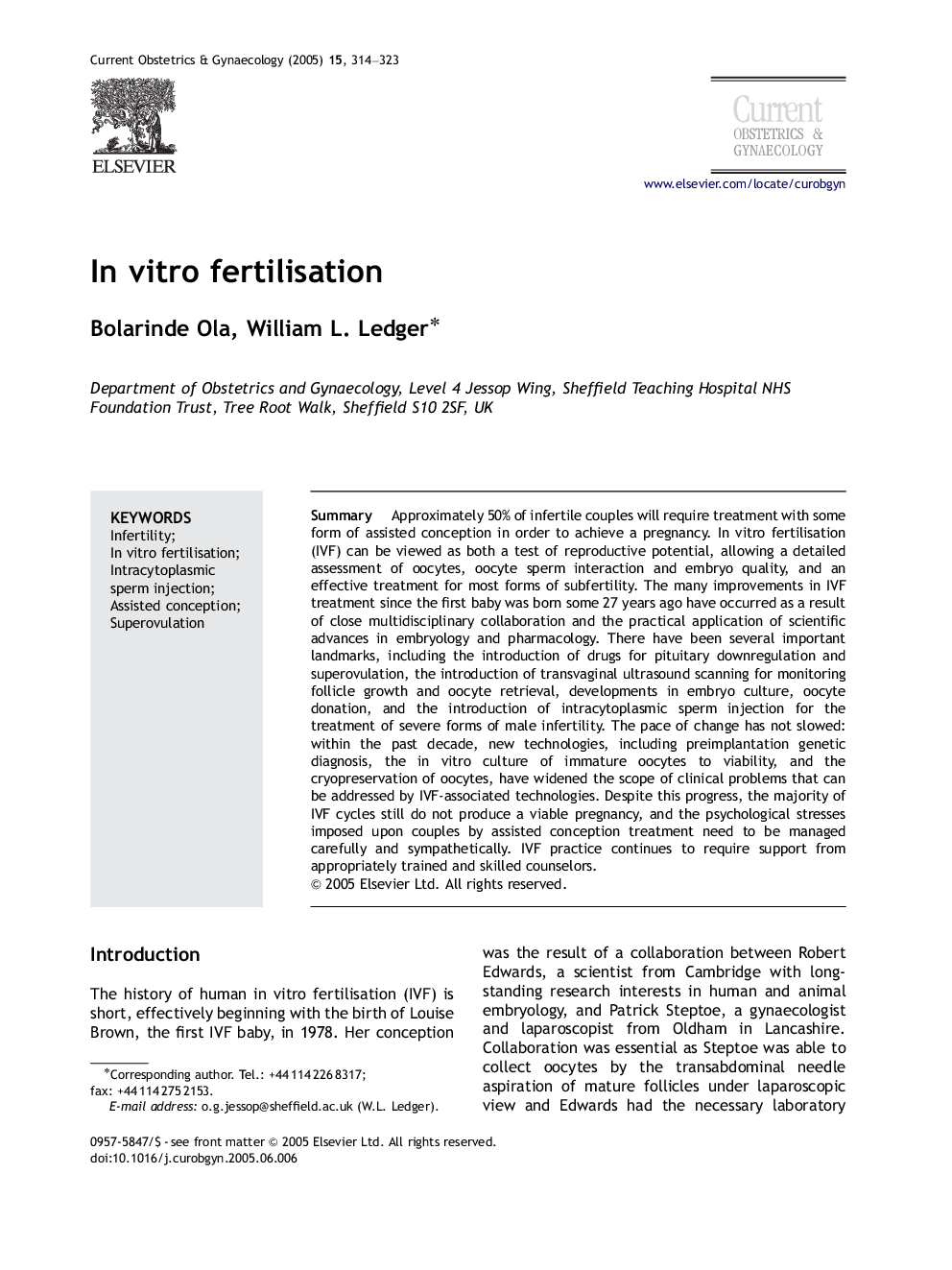| Article ID | Journal | Published Year | Pages | File Type |
|---|---|---|---|---|
| 9318269 | Current Obstetrics & Gynaecology | 2005 | 10 Pages |
Abstract
Approximately 50% of infertile couples will require treatment with some form of assisted conception in order to achieve a pregnancy. In vitro fertilisation (IVF) can be viewed as both a test of reproductive potential, allowing a detailed assessment of oocytes, oocyte sperm interaction and embryo quality, and an effective treatment for most forms of subfertility. The many improvements in IVF treatment since the first baby was born some 27 years ago have occurred as a result of close multidisciplinary collaboration and the practical application of scientific advances in embryology and pharmacology. There have been several important landmarks, including the introduction of drugs for pituitary downregulation and superovulation, the introduction of transvaginal ultrasound scanning for monitoring follicle growth and oocyte retrieval, developments in embryo culture, oocyte donation, and the introduction of intracytoplasmic sperm injection for the treatment of severe forms of male infertility. The pace of change has not slowed: within the past decade, new technologies, including preimplantation genetic diagnosis, the in vitro culture of immature oocytes to viability, and the cryopreservation of oocytes, have widened the scope of clinical problems that can be addressed by IVF-associated technologies. Despite this progress, the majority of IVF cycles still do not produce a viable pregnancy, and the psychological stresses imposed upon couples by assisted conception treatment need to be managed carefully and sympathetically. IVF practice continues to require support from appropriately trained and skilled counselors.
Keywords
Related Topics
Health Sciences
Medicine and Dentistry
Obstetrics, Gynecology and Women's Health
Authors
Bolarinde Ola, William L. Ledger,
